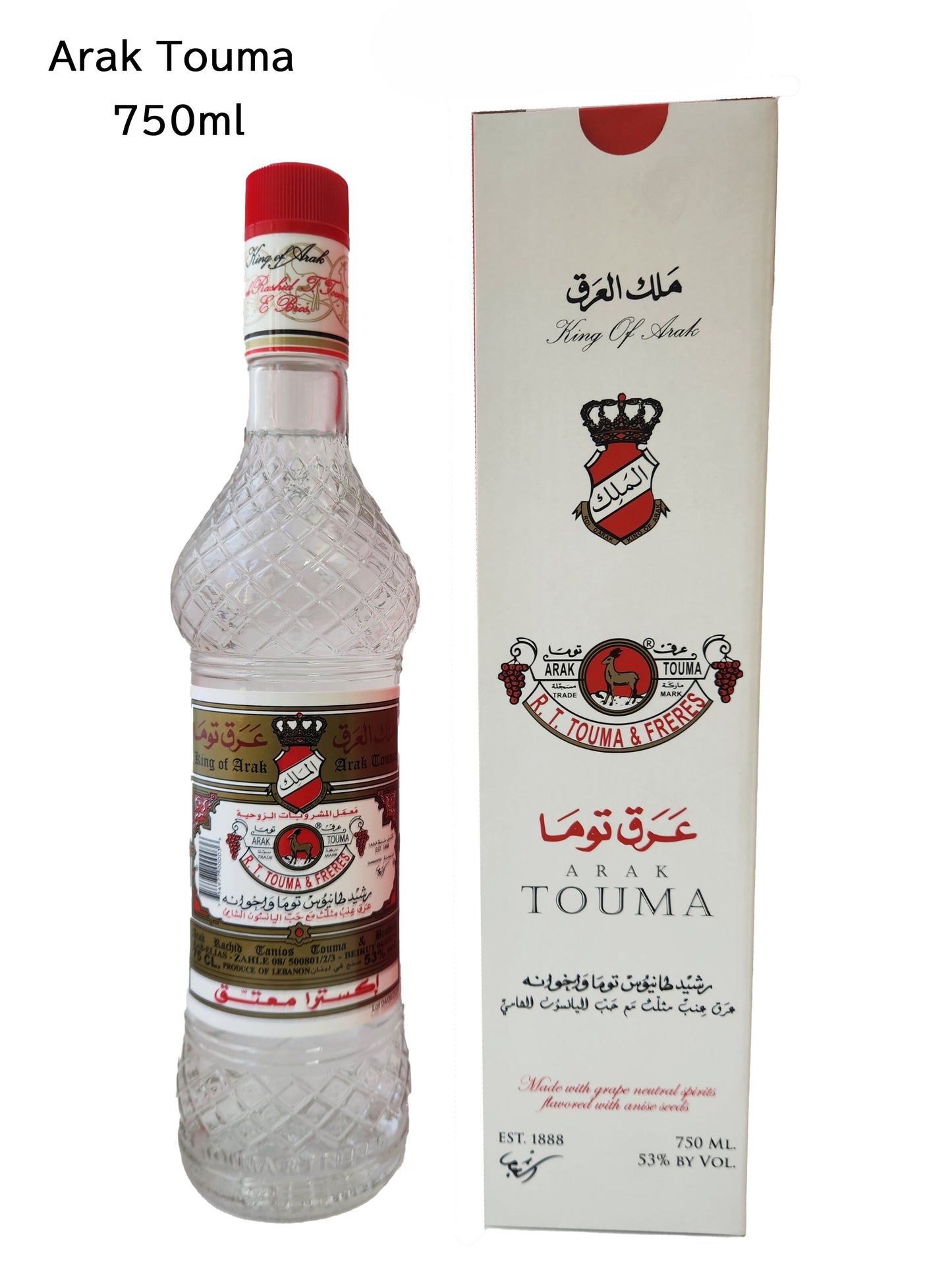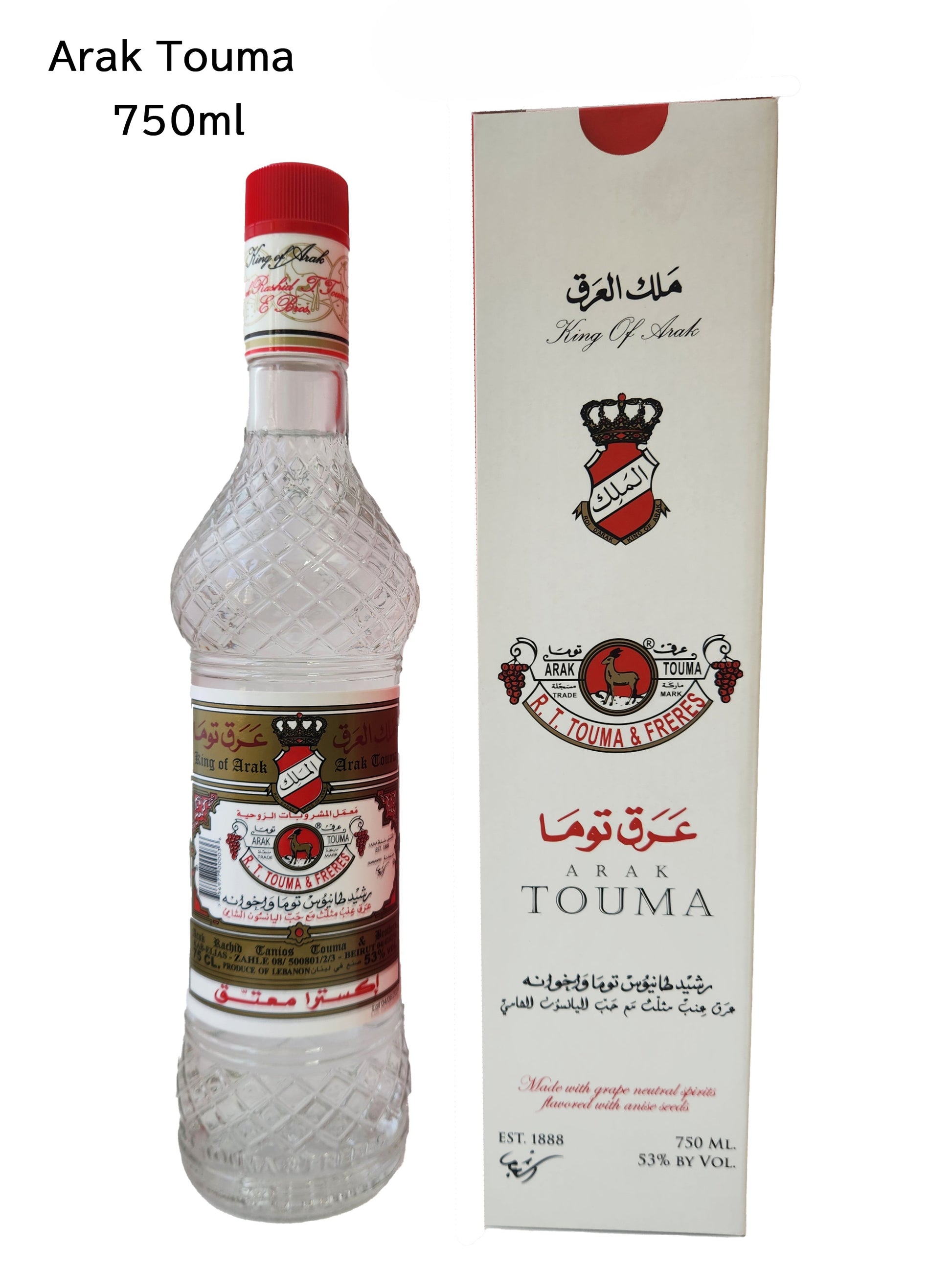chichukai
Arak Touma extra 750ml
Arak Touma extra 750ml
Couldn't load pickup availability
Arak is a distilled liquor made from grapes and flavored with aniseed.
It has a slightly higher alcohol content than regular products and comes in a special presentation box.
Arak is a distilled liquor that has long been popular in Lebanon.
Made from distilled grapes and flavored with aniseed, it is an essential part of local meals, even more so than wine.
White grape juice is left to rest for about a week before distillation, and aniseed is added and distilled several more times.
When it reaches an alcohol content of around 30%, it is bottled in earthenware jars and aged for one to two years.
Arak is known for its cloudy white color when water is added, and is also known as "lion's milk."
There is also a theory that Japanese shochu has its roots in Lebanese arak.
It is said to have been introduced to Japan via Nagasaki during the Edo period,
where shochu was known as "araki sake."
[How to Drink It the Authentic Lebanese Way]
1. Pour kusarak into a glass about 1/3 full.
2. Add an equal amount of water until the arak turns cloudy.
3. Finally, add ice and pour until the glass is almost to the rim.
The Lebanese way is to enjoy it little by little with a meal.
While the Clos Saint-Thomas winery is now known for its many award-winning wines, it is a historic producer that originally began producing arak.
In Lebanon, the name "Touma" is so well-known that it's synonymous with arak.
The unique bottle design, modeled after a mosque, and the detailed label design are also noteworthy.
It also makes a great gift.
|
|||||||||||||||||||
|
|
Share


